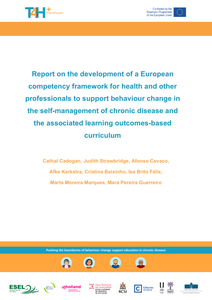This open access book is a valuable resource for students in health and other professions and practicing professionals interested in supporting effective change in self-management behaviors in chronic disease, such as medication taking, physical activity and healthy eating. Developed under the auspices of the Train4Health project, funded by the Erasmus+ program of the European Union, the book contains six chapters written by international contributors from different disciplines. This chapter sets the stage for the remaining book, by introducing the Train4Health project and by explaining how the learning outcomes presented in subsequent chapters have been derived and linked with content of the book. Firstly, the Train4Health interprofessional competency framework to support behaviour change in persons self-managing chronic disease is briefly presented. This European competency framework was the starting point for developing the learning outcomes-based curriculum, which is succinctly addressed in the subsequent section. Finally, practical considerations about the Train4Health curriculum are discussed, including opportunities and challenges for interprofessional education.
LINK
Chronic diseases represent a significant burden for the society and health systems; addressing this burden is a key goal of the European Union policy. Health and other professionals are expected to deliver behaviour change support to persons with chronic disease. A skill gap in behaviour change support has been identified, and there is room for improvement. Train4Health is a strategic partnership involving seven European Institutions in five countries, which seeks to improve behaviour change support competencies for the self-management of chronic disease. The project envisages a continuum in behaviour change support education, in which an interprofessional competency framework, relevant for those currently practising, guides the development of a learning outcomes-based curriculum and an educational package for future professionals (today’s undergraduate students).
DOCUMENT

This open access book is a valuable resource for students in health and other professions and practicing professionals interested in supporting effective change in self-management behaviors in chronic disease, such as medication taking, physical activity and healthy eating. Developed under the auspices of the Train4Health project, funded by the Erasmus+ program of the European Union, the book contains six chapters written by international contributors from different disciplines. This chapter presents open-access educational products that supplement this book: case studies and a web application to simulate behaviour change support in persons with chronic disease. The former is of particular interest for academic educators, while the latter may interest students independently pursuing training outside the classroom. These products can also be useful for professionals aiming to enhance behaviour change competencies in practice. First, it addresses key aspects of product development, including hallmarks such as the incorporation of behaviour change science and transnational co-production with users. Then, the main features of case studies and the web application with 2D virtual humans are described.
LINK